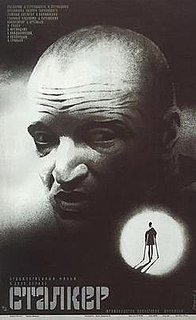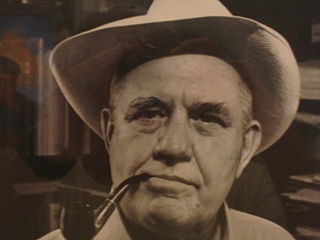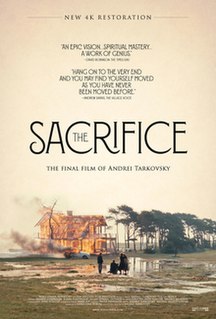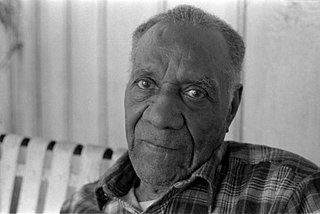
Andrei Arsenyevich Tarkovsky was a Soviet Russian film director, screenwriter, and film theorist. Widely considered one of the greatest and most influential filmmakers of all time, his films explore spiritual and metaphysical themes, and are noted for their slow pacing and long takes, dreamlike visual imagery, and preoccupation with nature and memory.

Solaris is a 1961 science fiction novel by Polish writer Stanisław Lem. It follows a crew of scientists on a research station as they attempt to understand an extraterrestrial intelligence, which takes the form of a vast ocean on the titular alien planet. The novel is one of Lem's best-known works.

Stalker is a 1979 Soviet science fiction art film directed by Andrei Tarkovsky with a screenplay written by Arkady and Boris Strugatsky, loosely based on their 1972 novel Roadside Picnic. The film combines elements of science fiction with dramatic philosophical, psychological and theological themes.

A gynoid, or fembot, is a feminine humanoid robot. Gynoids appear widely in science fiction film and art. As more realistic humanoid robot design becomes technologically possible, they are also emerging in real-life robot design.

James Frank Dobie was an American folklorist, writer, and newspaper columnist best known for his many books depicting the richness and traditions of life in rural Texas during the days of the open range. As a public figure, he was known in his lifetime for his outspoken liberal views against Texas state politics, and carried out a long, personal war against what he saw as braggart Texans, religious prejudice, restraints on individual liberty, and the mechanized world's assault on the human spirit. He was instrumental in saving the Texas Longhorn breed of cattle from extinction.

The Sacrifice is a 1986 drama film written and directed by Andrei Tarkovsky. Starring Erland Josephson, the film was produced by the Swedish Film Institute. Many of the crew were alumni of Ingmar Bergman's films.

Willie James Wells, nicknamed "The Devil," was an American baseball player. He was a shortstop who played from 1924 to 1948 for various teams in the Negro leagues and in Latin America.
Jack Edward Jackson, better known by his pen name Jaxon, was an American cartoonist, illustrator, historian, and writer. He co-founded Rip Off Press, and some consider him to be the first underground comix artist, due to his most well-known comic strip God Nose.

Frederick Luis Aldama is an American academic, known for this work as the Jacob & Frances Sanger Mossiker Chair in the Humanities, founder and director of the Latinx Pop Lab, and Affiliate Faculty in Radio-TV-Film at the University of Texas, Austin, and Adjunct Professor & Distinguished University Professor at The Ohio State University. He teaches courses on Latinx comics, tv, and film in the departments of English and Radio-Television-Film. At the Ohio State University he was Distinguished University Professor, Arts & Humanities Distinguished Professor of English, University Distinguished Scholar, and Alumni Distinguished Teacher as well as recipient of the Rodica C. Botoman Award for Distinguished Teaching and Mentoring and the Susan M. Hartmann Mentoring and Leadership Award. At the Ohio State University he was founder and director of the award-winning LASER/Latinx Space for Enrichment Research and founder and co-director of the Humanities & Cognitive Sciences High School Summer Institute. Aldama is the creator and curator of the Planetary Republic of Comics.

Sculpting in Time is a book by Russian filmmaker Andrei Tarkovsky about art and cinema in general, and his own films in particular. It was originally published in 1985 in German shortly before the author's death, and published in English in 1987, translated by Kitty Hunter-Blair. The title refers to Tarkovsky's own name for his style of filmmaking.

Alexander Frank Skutch was a naturalist and writer. He published numerous scientific papers and books about birds and several books on philosophy. He is best remembered ornithologically for his pioneering work on helpers at the nest.
In film theory, the term oneiric refers to the depiction of dream-like states or to the use of the metaphor of a dream or the dream-state in the analysis of a film. The term comes from the Greek Óneiros, the personification of dreams.
Elizabeth Hill Boone is an American art historian, ethnohistorian and academic, specialising in the study of Latin American art and in particular the early colonial and pre-Columbian art, iconography and pictorial codices associated with the Mixtec, Aztec and other Mesoamerican cultures in the central Mexican region. Her extensive published research covers investigations into the nature of Aztec writing, the symbolism and structure of Aztec art and iconography and the interpretation of Mixtec and Aztec codices.

The Contemporary Austin – Jones Center on Congress Avenue, formerly known as the AMOA-Arthouse at The Jones Center, is one of two museum sites of The Contemporary Austin.

Solaris is a 1972 Soviet science fiction drama film based on Stanisław Lem's 1961 novel of the same title. The film was co-written and directed by Andrei Tarkovsky, and stars Donatas Banionis and Natalya Bondarchuk. The electronic music score was performed by Eduard Artemyev and features a composition by J.S. Bach as its main theme. The plot centers on a space station orbiting the fictional planet Solaris, where a scientific mission has stalled because the skeleton crew of three scientists have fallen into emotional crises. Psychologist Kris Kelvin (Banionis) travels to the station to evaluate the situation, only to encounter the same mysterious phenomena as the others.

Steven Mintz, is an American historian at the University of Texas at Austin. For five years, from 2012 through 2017, he served as executive director of the University of Texas System's Institute for Transformational Learning. This institute is tasked with delivering a high-quality education that is more affordable and accessible across the System's 14 academic campuses and health science centers. He previously taught history at Oberlin College, University of Houston, and Columbia University, where he directed the Graduate School of Arts and Sciences Teaching Center. He has also held visiting appointments at Pepperdine University and the University of Siegen in Germany, been a visiting scholar at the Minda de Gunzburg Center for European Studies at Harvard University. and a fellow at the Center for Advanced Study in the Behavioral Sciences at Stanford University.
Timothy Hyman is a British figurative painter, art writer and curator. He has published monographs on both Sienese Painting and on Pierre Bonnard, as well as most recently The World New Made: Figurative Painting in the Twentieth Century. He has written extensively on art and film, has been a regular contributor to The Times Literary Supplement and has curated exhibitions at the Tate, Institute of Contemporary Arts and Hayward galleries. Hyman is a portraitist, but is best known for his narrative renditions of London. Drawing inspiration from artists such as Max Beckmann and Bonnard, as well as Lorenzetti and Brueghel, he explores his personal relationship, both real and mythological, with the city where he lives and works. He employs vivid colours, shifting scale and perspectives, to create visionary works. He was elected an RA in 2011.
A list of books and essays about Andrei Tarkovsky :
Deimantas Narkevičius is one of the most consistent and widely recognised Lithuanian artists on the international art scene. Originally trained as a sculptor, Narkevičius has mainly worked with film and video. Employing documentary footage, voice-overs, interviews, re-enactments and found photographs, his films submit historical events to the narrative structures of storytelling and cinema. In his artistic practice Narkevičius examines the relationship of personal memories to political histories, particularly those of his native Lithuania. For the artist, history itself has become both material and methodology.












